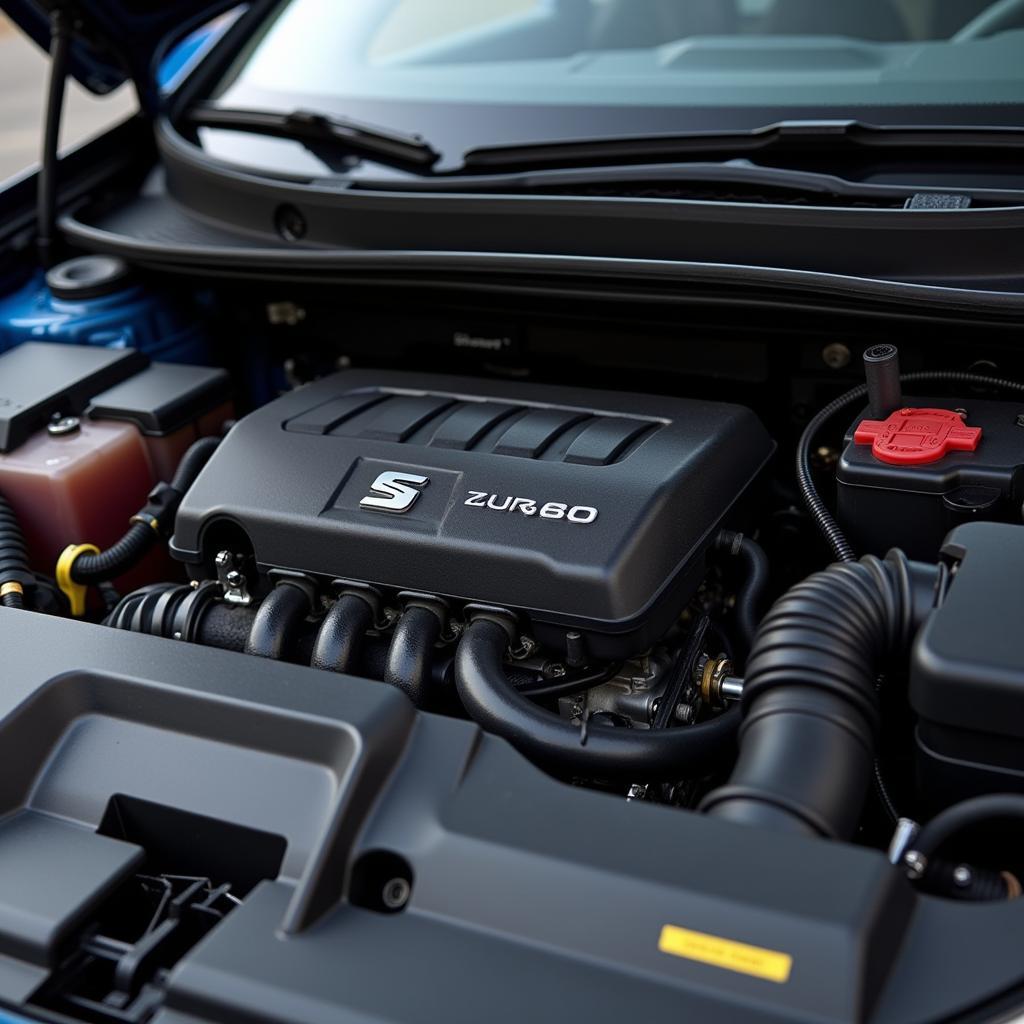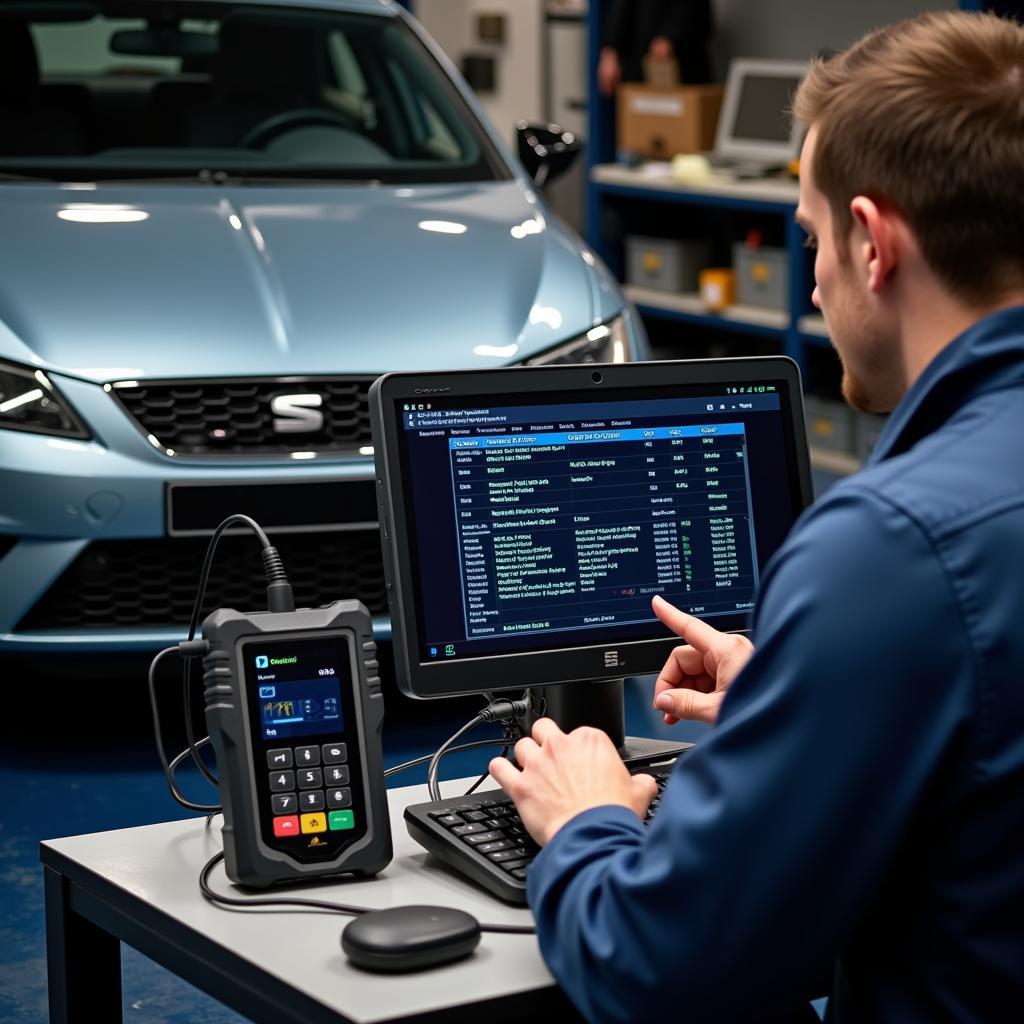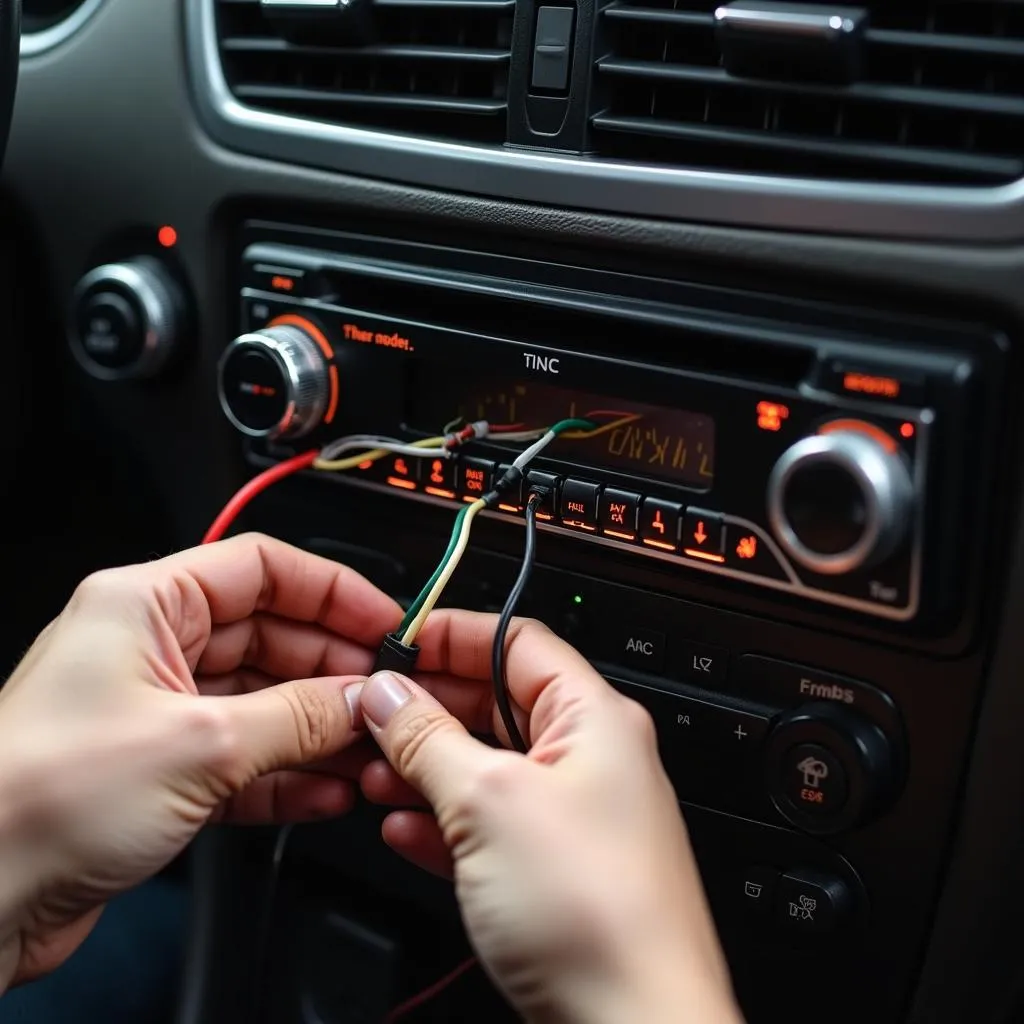The dreaded particulate filter warning light on your Seat Leon dashboard. A cause for concern? Definitely. A reason to panic? Not necessarily. This guide will walk you through everything you need to know about the Seat Leon particulate filter warning light, from understanding why it comes on to practical solutions and expert advice on preventing future issues.
Decoding Your Seat Leon’s Diesel Particulate Filter (DPF) Warning Light
First things first, let’s demystify this critical component. The Diesel Particulate Filter (DPF) plays a crucial role in your Seat Leon’s emission control system. Its job is to trap and burn off harmful soot particles from the exhaust gases, ensuring your car meets environmental standards.
Now, when that amber warning light illuminates your dashboard, it signifies a problem with your DPF. Typically, it indicates a build-up of soot exceeding the filter’s capacity.
Common Reasons Your DPF Warning Light is On
There are a few usual suspects behind the illuminated DPF warning light:
- Frequent Short Journeys: If your Seat Leon primarily navigates city streets or short trips, the DPF might not reach the required temperature to initiate the regeneration process (burning off the collected soot). This can lead to a gradual build-up, triggering the warning light.
- Faulty Sensors: Your Seat Leon relies on sensors to monitor the DPF’s performance. A malfunctioning sensor might send inaccurate readings, prompting the warning light even if your DPF is functioning correctly.
- Driving Style: Consistent low-speed driving or excessive idling can also hamper the DPF’s regeneration process, contributing to soot accumulation.
- DPF Component Failure: In some cases, the DPF itself, or components like the pressure sensor or temperature sensor, can fail, necessitating repair or replacement.
 Seat Leon DPF Close-Up
Seat Leon DPF Close-Up
What to Do When the DPF Warning Light Comes On
Seeing any warning light on your dashboard can be disconcerting. Here’s a step-by-step guide on what to do when your Seat Leon’s DPF warning light illuminates:
- Consult Your Owner’s Manual: Your Seat Leon’s owner’s manual is your first point of reference. It often provides specific instructions or recommendations tailored to your model.
- Take it for a Drive: If the warning light is accompanied by a message suggesting a DPF regeneration is required, the simplest solution might be a good, long drive. Aim for a steady speed on a highway for at least 20-30 minutes. This allows the DPF to reach its optimal operating temperature and initiate the self-cleaning process.
- Seek Professional Help: If the warning light persists or is accompanied by other symptoms like loss of power or unusual engine noise, it’s crucial to seek professional help. Ignoring the issue can lead to more severe and costly damage down the line.
 Seat Leon Undergoing Diagnostics
Seat Leon Undergoing Diagnostics
Preventative Measures to Avoid Future DPF Issues
Prevention is always better than cure. Here are some proactive measures to keep your Seat Leon’s DPF in optimal condition:
- Regular Long Drives: Incorporate a monthly highway drive into your routine, especially if your usual driving consists mainly of short trips.
- Use the Right Engine Oil: Always use the engine oil specified by Seat for your Leon’s model. Using incorrect oil can negatively impact the DPF’s lifespan.
- Fuel Quality: Opting for high-quality fuel can help minimize soot production.
- Timely Maintenance: Adhere to your Seat Leon’s scheduled maintenance intervals. Regular servicing allows technicians to monitor the DPF’s health and address any potential issues early on.
Remote Diagnostic Solutions for Your Seat Leon
The world of automotive technology is rapidly evolving. Today, remote diagnostic services offer a convenient and efficient way to address your Seat Leon’s DPF issues.
“Remote diagnostics allow us to analyze your Seat Leon’s system in real-time, pinpoint the exact cause of the DPF problem, and often provide a solution without you needing to step foot in a garage,” says Carl Johnson, Senior Automotive Diagnostic Technician at Car Diagnostic Tech.
These services can involve:
- Software Updates: Addressing DPF issues remotely might involve software updates to optimize the regeneration process.
- Forced Regeneration: In some instances, a remote technician can initiate a forced DPF regeneration using specialized software.
Seat Leon Cupra Warning Lights: Understanding the Differences
It’s important to note that while the DPF warning light is common across the Seat Leon range, specific warning lights and their meanings might differ slightly for the sportier Seat Leon Cupra models. For a comprehensive understanding of the warning lights specific to your Seat Leon Cupra, refer to our dedicated guide: seat leon cupra warning lights
FAQs: Seat Leon Particulate Filter Warning Light
Q: Can I continue driving with the DPF warning light on?
A: It’s not recommended. While initially, it might not seem like a major issue, ignoring the DPF warning light can lead to more severe problems like engine damage or a completely blocked DPF, requiring expensive repairs.
Q: How long does a DPF regeneration take?
A: A DPF regeneration cycle typically takes around 20-30 minutes of steady driving. However, it can vary depending on the level of soot build-up.
Q: How often does a DPF need replacing?
A: A well-maintained DPF can last the lifetime of your Seat Leon. However, factors like driving habits and maintenance can influence its lifespan.
Keep Your Seat Leon Running Smoothly
The DPF warning light on your Seat Leon shouldn’t be ignored. Understanding what triggers it, how to address it, and most importantly, how to prevent future occurrences, can save you time, money, and unnecessary stress. By adopting proactive measures and staying informed about the latest automotive technologies, you can keep your Seat Leon performing at its best for miles to come.

